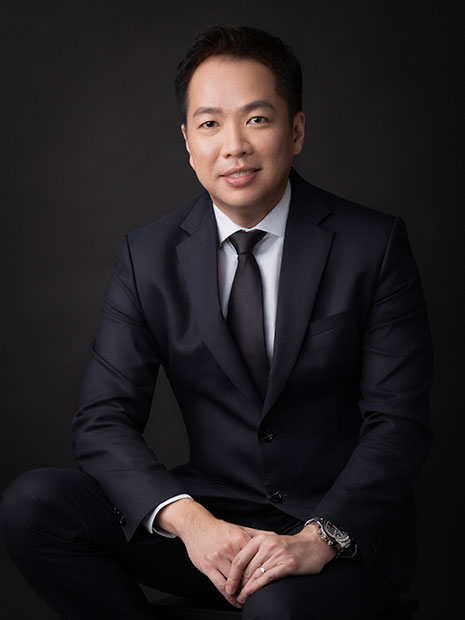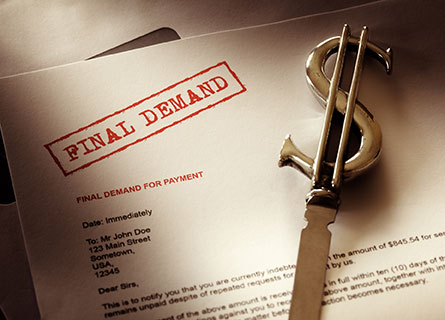Understanding the Debt Repayment Scheme
20.12.2022If you or someone you know are worrying about your debts, perhaps fearing the next bill you receive, then you may find this article helpful. It explains the Debt Repayment Scheme in Singapore, which can help you regain control of your finances, stop the debt from growing and repay the money you owe.
The Debt Repayment Scheme (DRS)
You may be familiar with the idea of bankruptcy, which happens as a last resort when you can’t pay your debts. But did you know that even someone declared bankrupt must still repay what their creditors are owed?
Under the DRS, an officer of the court from the Insolvency Office at the Ministry of Law will be appointed by the High Court. They will administer the debtor’s affairs. The officer is known as the Official Assignee. They will investigate the debtor’s conduct and help to recover assets belonging to them, so they can be distributed to creditors.
Think of the DRS as a way of avoiding being declared bankrupt.
How can the Debt Repayment Scheme help me?
An advantage of the DRS is that unsecured creditors (those who have no claim over a debtor’s property for their financing) are prevented from bringing legal action against a debtor, unless granted permission to do so by a court.
The debtor works with the OA to devise a repayment schedule to repay the debts owed to these unsecured creditors, over a set time period.
Another advantage of the DRS over bankruptcy is more freedom; bankrupts can’t do certain things, such as leave the country without permission from the OA, until they have been discharged from their bankruptcy.
Applying for the Debt Repayment Scheme
To use the DRS, you must first file a bankruptcy application at the court. On the other hand, if a creditor has filed bankruptcy proceedings against you, you’ll be referred to the Insolvency Office so the OA can decide if you’re eligible to use the DRS.
Debt Repayment Scheme eligibility criteria
To use the DRS you must:
- Be gainfully employed with a regular income
- Not have debt worth more than S$150,000
- Not be a partner in a partnership or a sole proprietor
- Not have been bankrupt at any point over the last 5 years
- Not have been on the DRS at any point over the last 5 years
In addition, you must not:
- Give any documents or information about your finances to the OA that are false or misleading
- Fail to provide any information about your finances requested by the OA
- Fail to provide your property or property disposals to the OA
- Invent losses or expenses to account for your property when you report to the OA
- Give any unjust preference to (1) anyone 1 year prior to the day the application for bankruptcy is made against you until the penultimate day of completing the DRS, or (2) any associate 2 years prior to the day the application for bankruptcy is made against you until the penultimate day of completing the DRS.
- Be party to any undervalue transaction with another party 3 years before the day the bankruptcy application is made until the second last day of completing the DRS
What happens If I’m eligible for the DRS?
If you have met the DRS eligibility criteria, then the OA will help you to create a Debt Repayment Plan (DRP).
You’ll need to submit a statement of your finances online along with your proposed debt repayment plan, using the Ministry of Law’s Insolvency Office E-Services portal. You must pay the $350 fee to submit these documents.
Your statements should be filed in the following order:
- Statement of Affairs
- Statement of Income & Expenditure
- Debt Repayment Plan
- Supporting Documents as listed in Annex B (Debtor’s List of Supporting Documents).
Having received the documents, the DRS administrator will check that they are appropriate. A mandatory meeting with creditors to talk about your monthly payments will also be arranged.
Before meeting with your creditors, the OA might amend terms in your repayment proposal to finalise details and sign off the DRP.
When the DRP is approved by the OA, you can start making your repayments to the OA. Then the OA can declare and share out the dividends amongst the creditors whose debts form part of the DRP.
Remember that if the OA deems you eligible to take part in the DRS, this status will be made public for anyone to see, if they wish.
What If I don’t meet the DRS eligibility criteria?
If the OA decides you’re not eligible to take part in the DRS, they will tell the court. The court will then proceed to hear your application for bankruptcy.
Debtor duties under the Debt Repayment Scheme
As well as your duty to repay your debts by following the DRS, you must also do the following:
- Disclose your property to the OA
- Tell the OA about any property disposals you made in the 5 years leading up to the bankruptcy proceedings against you, before the date on which the DRS concludes
- Go to creditor meetings when they are arranged by the OA (unless of course you have an illness, or other sufficient reason not to attend)
- Refrain from entering into any new debt exceeding S$1,000 without first telling the lender about your DRS status.
- Make sure the OA knows your place of residence at all times and any other relevant contact details
- Give any information required of you truthfully and on time, if it involves the DRS
- Make sure the proof of debts filed by those who have lent you money are correct and accurate
- Obey the OA’s instructions in a timely manner in all matters pertaining to the DRS.
What If I don’t comply with my obligations under the DRS?
Any failure by you to comply with your duties, or repay your debts, as set out in the DRP will end the DRS. The OA might then issue you with a Certificate of Failure. This then allows your creditors to bring fresh bankruptcy proceedings against you.
If I complete the DRS, what happens then?
If you successfully repay all the debts you owe by following the terms set out in your DRP, then the OA will give you a Certificate of Completion. This releases you from all debts mentioned in the DRS, except for:
- Debts which you didn’t tell the OA about
- Debts whose creditor did not file a corresponding proof
The OA reserves the right to revoke your Certificate of Completion if they believe you either didn’t disclose information required by the DRS, or falsely represented information which led to the approval of the DRS.
If this happens, you’ll then be once again liable for all debts you had been released from.
What fees must I pay to the OA for administering my DRS case?
Remember that you might be required to pay certain fees to the OA, for administering your case, including:
- $300 as the first yearly fee (for the initial 2 years, and $350 for the three following years)
- $250 for the creditors meeting
- 3% of the amount distributed (paid as a fee to the OA in exchange for distributing the dividends to your creditors)
- 5% of the amount collected in total (as a collection fee to the OA)
Conclusion
If you are considering filing for bankruptcy then the Debt Repayment Scheme could enable you to pay off your debts in an affordable and structured manner, without risking overstretching your current living expenses.
Please feel free to contact one of our expert bankruptcy lawyers if you are unsure about whether to file for bankruptcy or apply for the DRS.




